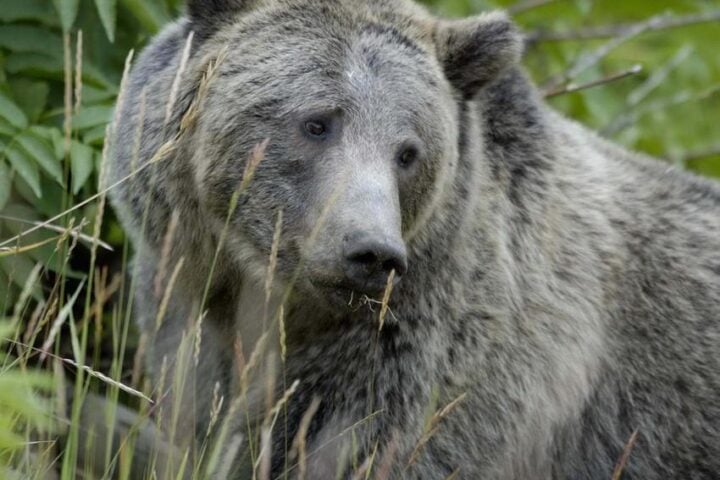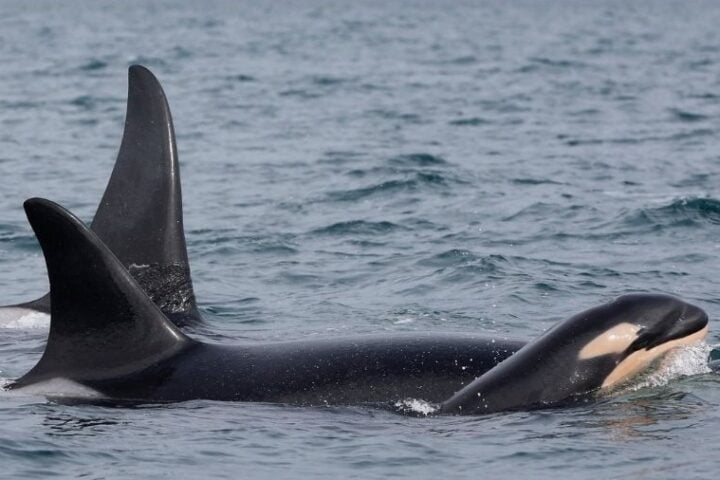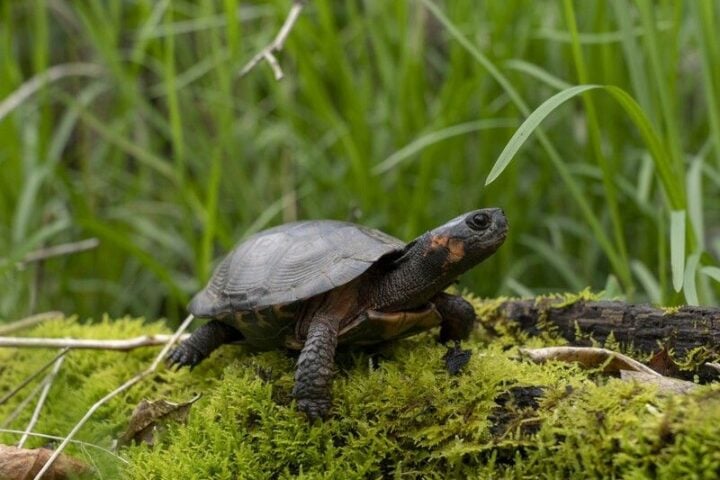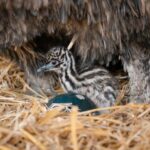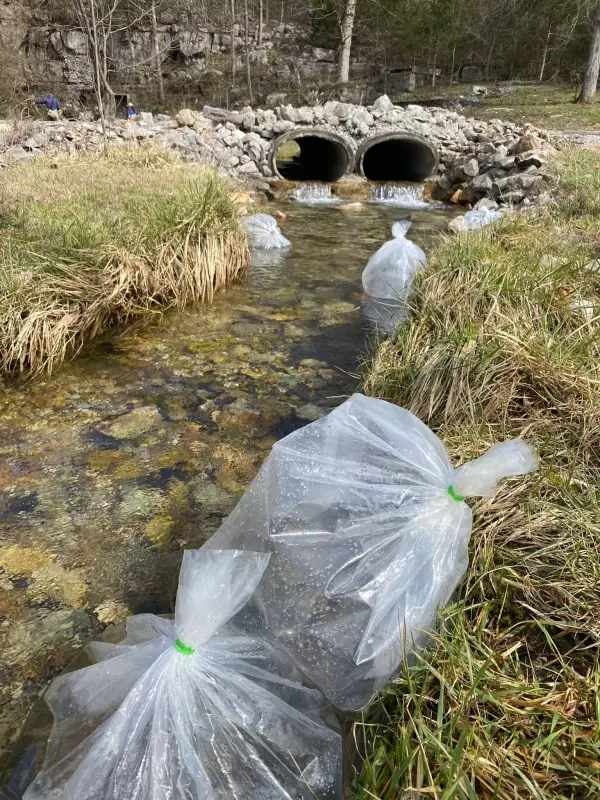
Wolf Creek National Fish Hatchery (NFH) has successfully reintroduced 201 endangered Barrens topminnows into their historic range in south-central Tennessee. This marks the first release since the species was federally listed.
The release included 107 fish from the Merkle population and 94 from the Type locality population. These fish had been transferred to Wolf Creek NFH earlier when drought conditions threatened their survival in the wild.
“With recent rainfall and change in conditions, it was finally time to return these populations back to their habitat, just in time for spawning season,” noted Makenzie Foster, Biological Science Technician at Wolf Creek NFH who participated in the release.
During the release, male topminnows displayed vivid blue markings while many females carried eggs – positive signs for potential reproduction. Staff used seine nets to survey existing wild populations, measuring each fish before returning them to the stream.
The release represents a major milestone in recovery efforts spanning over two decades. The Barrens Topminnow Recovery Plan, implemented in July 2024, enabled this first release in more than four years.
Similar Posts
Conservation partners collaborated closely on this project, including Conservation Fisheries, Inc., Tennessee Aquarium, Tennessee Wildlife Resources Agency, and USFWS Cookeville Ecological Services Office.
The Barrens topminnow faces significant threats from invasive species, particularly the Western Mosquitofish, which has contributed to its population decline.
In related developments, the U.S. Fish and Wildlife Service proposed critical habitat designation for the species – 1.5 acres of spring pool and 11.4 miles of spring run in Tennessee.
Warren Stiles, lead recovery biologist, emphasized the importance of this designation: “Critical habitat is essential for ensuring the Barrens topminnow’s survival for future generations.”

The Service is currently seeking public comments on a draft recovery plan focused on habitat restoration, invasive species removal, population monitoring, and captive breeding programs.
“The Barrens topminnow remains one of the rarest fish in the world,” noted the source. “It requires substantial conservation effort to assist in the recovery of the species.”
FAQs
What is the Barrens topminnow and why is it endangered?
The Barrens topminnow (Fundulus julisia) is one of the world’s rarest fish species, native to south-central Tennessee. It’s endangered primarily due to competition and predation from invasive species, particularly the Western Mosquitofish, which has significantly reduced its population over the past two decades.
How many Barrens topminnows were released in the recent conservation effort?
Wolf Creek National Fish Hatchery released a total of 201 Barrens topminnows – specifically 107 from the Merkle population and 94 from the Type locality population – into their historic range in south-central Tennessee.
Why was the timing of the release significant?
The release was timed to coincide with the spawning season when males display vivid blue markings and females are gravid with eggs. This timing increases the likelihood of successful reproduction, which is critical for the species’ recovery.
What organizations are involved in the Barrens topminnow conservation efforts?
The release was a collaborative effort between Wolf Creek National Fish Hatchery, Conservation Fisheries, Inc., Tennessee Aquarium, Tennessee Wildlife Resources Agency, and USFWS Cookeville Ecological Services Office.
What is the Barrens Topminnow Recovery Plan?
Implemented in July 2024, the Barrens Topminnow Recovery Plan outlines actions for the species’ recovery, including habitat restoration, invasive species management, population monitoring, and captive breeding programs. The plan enabled the first release of the topminnows in over four years.
What is the proposed critical habitat for the Barrens topminnow?
The U.S. Fish and Wildlife Service has proposed critical habitat consisting of 1.5 acres of spring pool and 11.4 miles of spring run in Tennessee. This designation aims to protect essential areas for the topminnow’s survival and recovery.
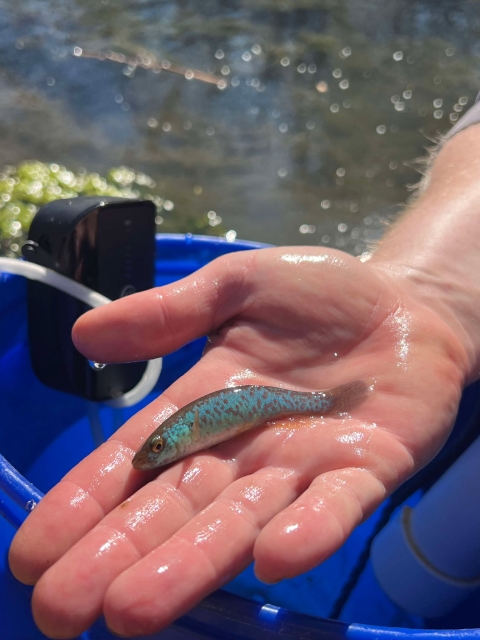
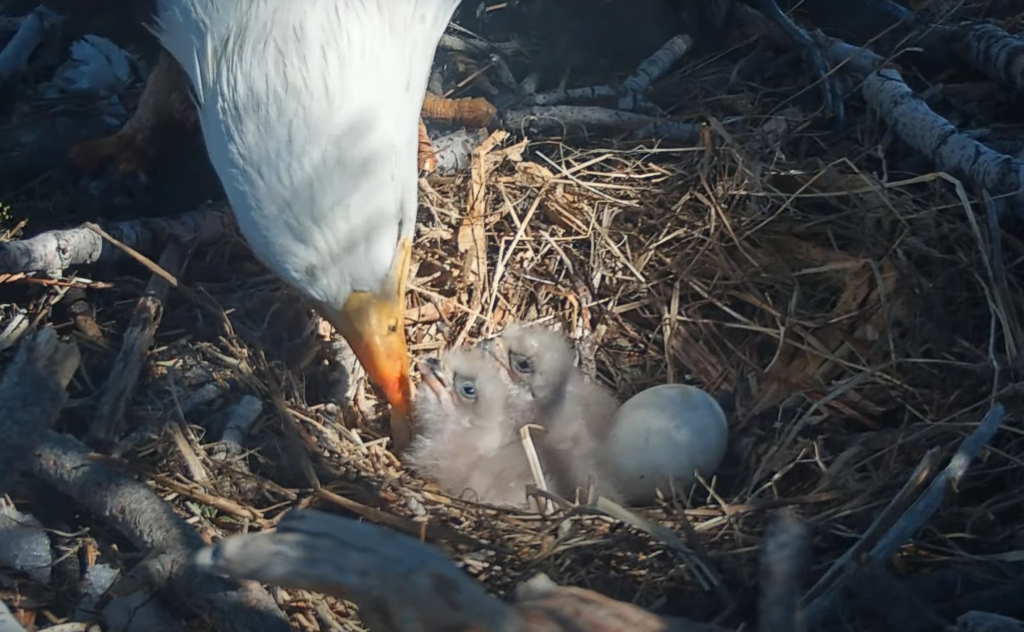


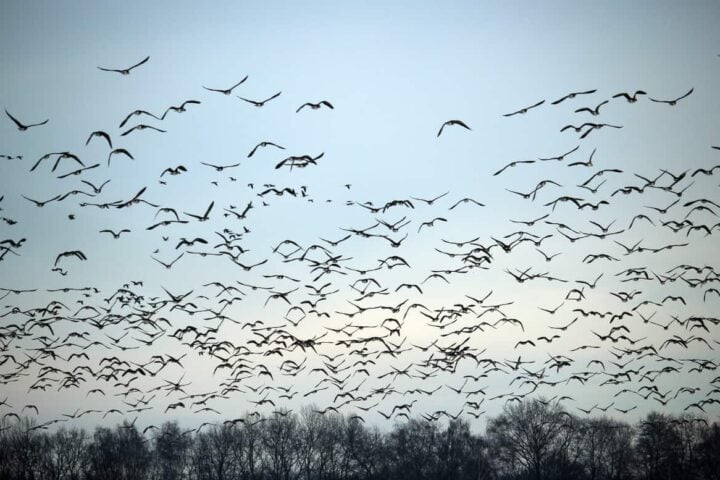
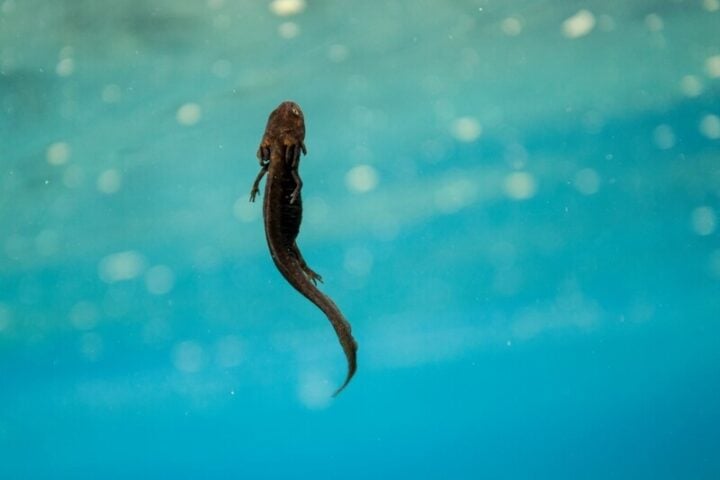
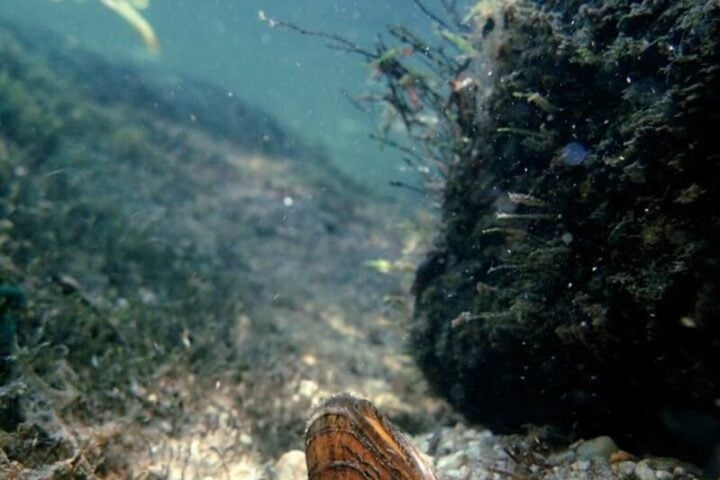


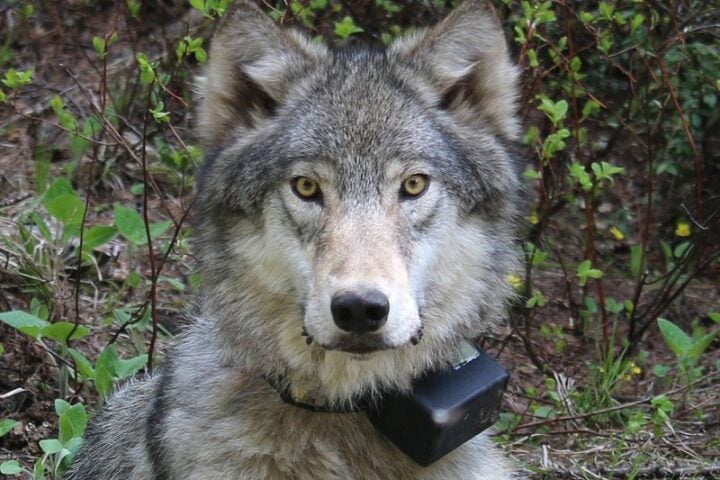
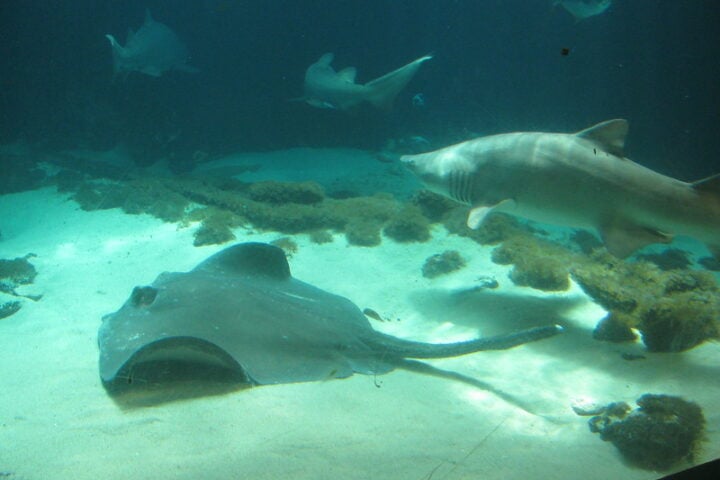
![Representative Image: European Starling [49/366]. Photo Source: Tim Sackton (CC BY-SA 2.0)](https://www.karmactive.com/wp-content/uploads/2025/04/Starlings-Drop-82-in-UK-Gardens-as-Birdwatch-2025-Reveals-Record-Low-Count-Since-1979-720x480.jpg)
